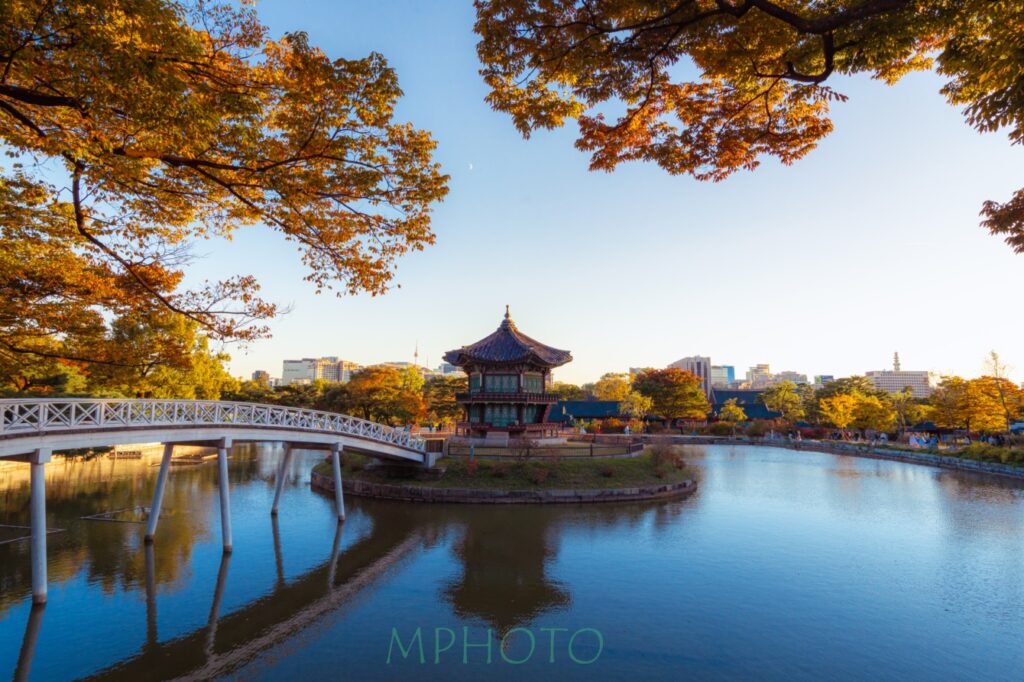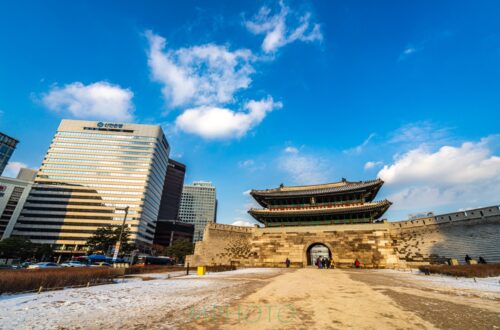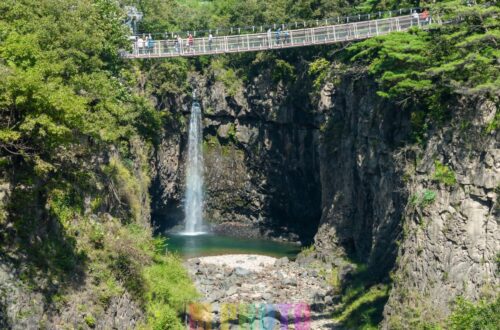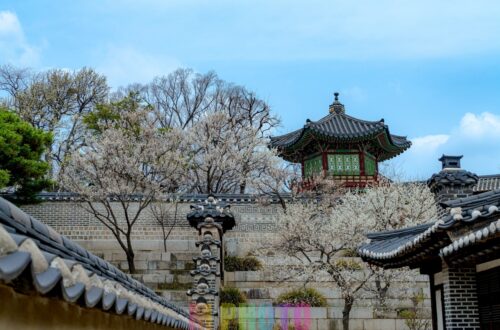Seoul Travel – Gyeongbokgung Palace
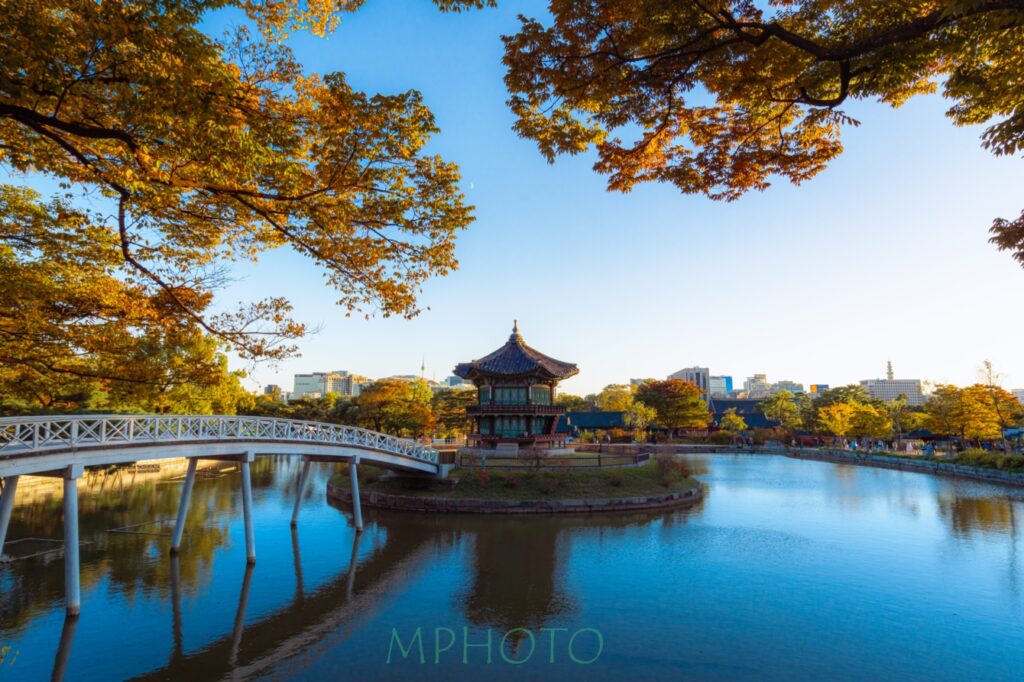
Why You Should Visit Gyeongbokgung Palace in Seoul
- Rich Historical Significance: Gyeongbokgung Palace, built in 1395, is a cornerstone of Korean history and culture. As the main royal palace during the Joseon Dynasty, it offers a direct connection to Korea’s past, giving visitors a profound sense of the country’s heritage and the royal family’s way of life.
- Architectural Splendor: The palace is an outstanding example of traditional Korean architecture. From the grandeur of the Geunjeongjeon Hall to the serene beauty of the Gyeonghoeru Pavilion, Gyeongbokgung showcases intricate designs and structures that reflect the artistry and craftsmanship of the time.
- Cultural Immersion: Visiting Gyeongbokgung is not just about seeing historical buildings; it’s an immersive cultural experience. You can witness the traditional changing of the guard ceremony, explore the National Palace Museum, and even dress up in traditional Korean attire, or hanbok, for free entry and a unique photo opportunity.
- Tranquil Escape in the City: Despite being located in the bustling heart of Seoul, Gyeongbokgung provides a peaceful escape with its expansive gardens and serene ponds. It’s a perfect spot to unwind and enjoy a moment of tranquility amidst the city’s fast pace.
- Seasonal Beauty: The palace grounds are breathtaking in every season. In spring, cherry blossoms adorn the gardens, while autumn brings a stunning display of colorful foliage. Each season offers a different perspective on the palace’s beauty, making it a must-visit throughout the year.
- Educational Value: Whether you’re a history buff or a casual traveler, Gyeongbokgung offers valuable insights into Korea’s past. The on-site museums provide in-depth information about the Joseon Dynasty, making the visit both informative and engaging.
- Accessibility: Located in the center of Seoul, Gyeongbokgung is easily accessible by public transportation. Its proximity to other historical sites and attractions makes it a convenient addition to any Seoul itinerary.
Gyeongbokgung Palace is more than just a historical site; it’s a gateway to understanding the rich cultural tapestry of Korea. A visit here offers not only an educational journey but also a memorable experience of beauty, peace, and cultural depth.
Discovering the Grandeur of Gyeongbokgung Palace: A Journey Through Korean History
Nestled in the heart of Seoul, Gyeongbokgung Palace stands as a testament to Korea’s rich historical and cultural heritage. As the largest of the Five Grand Palaces built during the Joseon Dynasty, Gyeongbokgung offers visitors a unique glimpse into the past, with its magnificent architecture, serene gardens, and rich cultural events.
Brief History
Gyeongbokgung, which means “Palace Greatly Blessed by Heaven,” was originally constructed in 1395 under the reign of King Taejo, the founder of the Joseon Dynasty. It served as the main royal palace until it was heavily damaged during the Japanese invasions in the late 16th century. The palace was meticulously reconstructed in the late 19th century, and although it underwent further damage during the 20th century, significant restoration efforts have restored much of its former glory.
Architectural Marvels
The palace complex features a harmonious blend of traditional Korean architecture and expansive gardens. Notable structures within the palace include:
- Geunjeongjeon Hall: This grand hall was used for important state ceremonies and is known for its stunning architectural design and intricate decorations.
- Gyeonghoeru Pavilion: Standing on an artificial island in a picturesque pond, this pavilion was used for royal banquets and is a favorite spot for photographers.
- Hyangwonjeong Pavilion: Located in a serene garden, this two-story hexagonal pavilion is another beautiful example of the palace’s exquisite design.
Cultural Experience
Visitors to Gyeongbokgung can immerse themselves in various cultural activities. The palace regularly hosts traditional Korean performances, and you can often see reenactments of the royal changing of the guard ceremony. Additionally, the National Palace Museum of Korea and the National Folk Museum, both located within the palace grounds, provide deeper insights into Korea’s royal heritage and everyday life in the past.
Practical Information
- Location: Gyeongbokgung Palace is easily accessible via Gyeongbokgung Station (Subway Line 3) or Gwanghwamun Station (Subway Line 5).
- Opening Hours: The palace is open from 9:00 AM to 6:00 PM, with last entry at 5:00 PM. It is closed on Tuesdays.
- Admission: General admission is 3,000 KRW for adults and 1,500 KRW for children aged 7-18. Free admission is available on the last Wednesday of each month.
- Guided Tours: Free guided tours are available in English at specific times throughout the day.
Visiting Tips
- Dress Appropriately: Visitors who wear traditional Korean attire (hanbok) can enter the palace for free, which adds a unique cultural touch to the experience.
- Best Time to Visit: Spring and autumn are the best times to visit, with pleasant weather and beautiful scenery. Try to visit early in the morning to avoid the crowds and enjoy the tranquil atmosphere.
Gyeongbokgung Palace is more than just a historic site; it’s a window into the soul of Korea, offering a profound understanding of the country’s legacy and traditions. Whether you’re a history enthusiast or a casual traveler, a visit to Gyeongbokgung is an unforgettable journey through time.
How to Get to Gyeongbokgung Palace
Gyeongbokgung Palace is located in the heart of Seoul and is easily accessible by various modes of transportation. Here’s a guide on how to reach this historic site:
By Subway
Option 1: Gyeongbokgung Station (Line 3)
- Take Line 3 (Orange Line) and get off at Gyeongbokgung Station.
- Use Exit 5, which will lead you directly to the palace’s main entrance, Gwanghwamun Gate.
Option 2: Gwanghwamun Station (Line 5)
- Take Line 5 (Purple Line) and get off at Gwanghwamun Station.
- Use Exit 2 and walk straight for about 10 minutes towards Gyeongbokgung. The palace entrance will be on your right side.
By Bus
Several bus routes stop near Gyeongbokgung Palace. Look for the following bus numbers:
- Blue Buses (Main Line): 1020, 7025
- Green Buses (Branch Line): 11, 7212
- Red Buses (Rapid Line): 9703, 9710
By Taxi
Taxis are widely available throughout Seoul. Simply tell the driver “Gyeongbokgung Palace” or show the Korean name “경복궁” to ensure they understand your destination.
By Foot
If you’re staying in central Seoul or visiting nearby attractions like Bukchon Hanok Village or Insadong, Gyeongbokgung Palace is within walking distance. Use a map or GPS to navigate the city’s streets and enjoy a pleasant walk to the palace.
Address
For navigation or to give directions to a driver, use the following address:
- 161 Sajik-ro, Jongno-gu, Seoul, South Korea
Tips for a Smooth Visit
- Check the Subway Timetable: Seoul’s subway system operates from around 5:30 AM to midnight, with frequent trains throughout the day.
- Bus Information: Bus stops near Gyeongbokgung have English signs, and buses announce stops in English, making it easy for non-Korean speakers.
- Peak Times: Gyeongbokgung can be crowded on weekends and public holidays, so plan your visit during off-peak hours if possible.
Enjoy your visit to Gyeongbokgung Palace, a journey through Korea’s royal history and a must-see landmark in Seoul!
